When someone loses part of their foot or an entire leg up to the pelvis, walking again is not just about getting a prosthetic. It’s about retraining the body, strengthening the muscles, and learning a whole new way to move. Gait training—the process of relearning to walk—is different for every amputee, but the challenges vary greatly depending on the level of amputation.
A person with a partial foot amputation still has some natural foot function, which means they must learn to balance and push off differently. A hemipelvectomy amputee, on the other hand, has lost an entire leg and part of the pelvis, requiring a completely new approach to walking, often with a high-tech prosthetic.
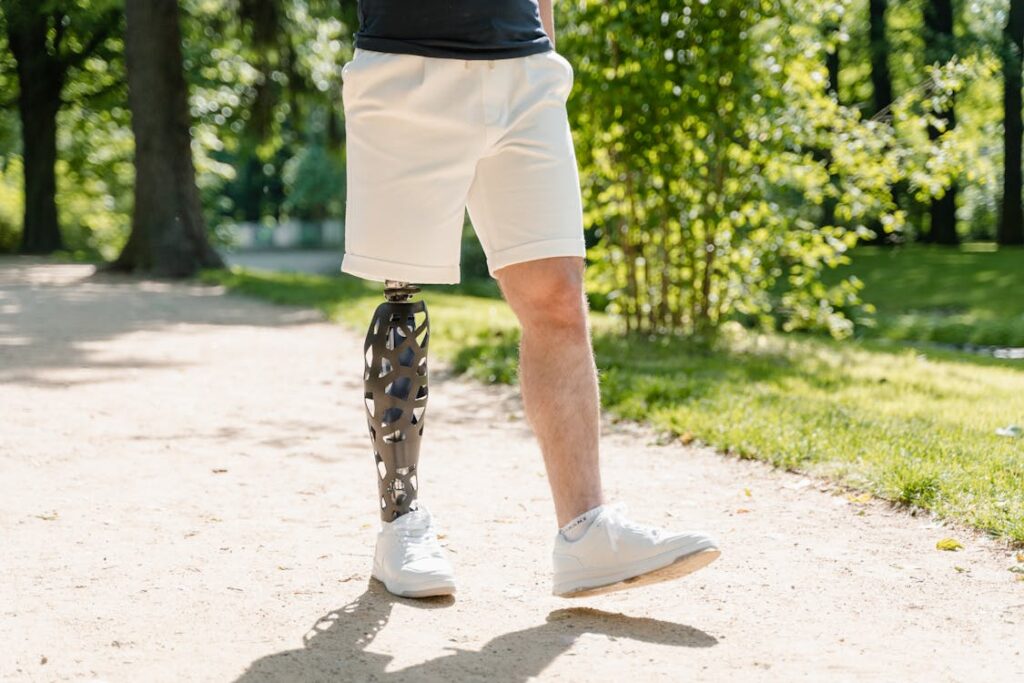
Understanding Gait Training for Partial Foot Amputees
Partial foot amputation can involve the loss of toes, the front part of the foot, or a larger portion extending toward the heel. While these amputees retain part of their foot, their ability to walk is affected in significant ways.
Gait training focuses on restoring balance, improving push-off strength, and preventing complications like uneven pressure on the remaining foot.
The Challenges of Walking After a Partial Foot Amputation
Losing part of the foot changes how the body moves. The foot plays a key role in stability, shock absorption, and forward movement.
With a partial foot amputation, the remaining foot structure must take on more work, and the body has to adjust.
One of the biggest challenges is maintaining a smooth and efficient gait. The front of the foot, especially the toes, helps with propulsion.
Without them, an amputee may have difficulty pushing off the ground, making each step less powerful. This can lead to a slower, unsteady walk and increased fatigue.
Another major issue is balance. The foot naturally distributes weight across its structure, but when part of it is missing, the remaining foot must adapt.
This can lead to instability, an uneven gait, and even pain in the other foot, as it tries to compensate.
How Gait Training Helps Partial Foot Amputees
Rehabilitation after a partial foot amputation is focused on rebuilding strength and adjusting movement patterns.
Physical therapists guide amputees through specific exercises and techniques to help them regain stability and efficiency in their gait.
One key aspect of training is learning how to properly distribute weight. Many partial foot amputees subconsciously avoid putting pressure on the remaining part of the foot, which can cause improper posture and long-term pain.
Therapists teach patients how to place their foot correctly to maintain even weight distribution.
Prosthetic solutions also play a vital role. Specially designed insoles, toe fillers, or partial foot prosthetics can help restore lost function.
These devices help provide balance, improve push-off, and reduce strain on the remaining foot. Learning how to walk with these prosthetics requires practice and training to ensure they integrate naturally into the patient’s movement.
Strengthening the Muscles for Better Movement
Since the foot is responsible for pushing the body forward, strength training is essential. Gait training includes exercises that target the calf muscles, ankle stabilizers, and even the hips, as these all contribute to walking.
Strengthening these muscles helps compensate for lost foot function, improving both power and control.
Stretching exercises are equally important. Many partial foot amputees experience tightness in the Achilles tendon or calf muscles due to altered walking mechanics.
Regular stretching helps maintain flexibility and prevents discomfort.
Preventing Secondary Complications
Without proper gait training, partial foot amputees may develop issues in other parts of their body. Overcompensating with the other leg can lead to knee, hip, or back pain.
Additionally, incorrect walking mechanics can cause excess pressure on the remaining part of the foot, increasing the risk of skin breakdown or ulcers.
Through guided rehabilitation, amputees can develop a natural, balanced gait that minimizes strain on their body.
Therapists work closely with patients to correct posture, improve weight distribution, and strengthen key muscle groups.
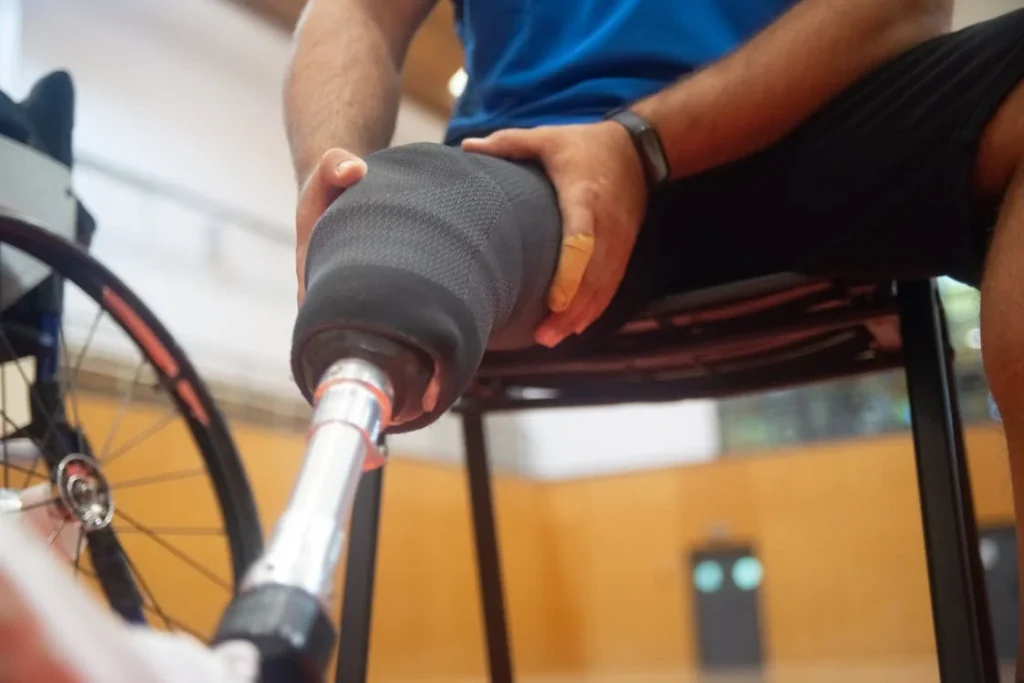
Gait Training for Hemipelvectomy Amputees
A hemipelvectomy is one of the most complex types of amputations. It involves the removal of an entire leg along with part or all of the pelvis.
Because this amputation eliminates the hip joint, walking again requires a complete retraining of the body.
Gait training is not just about learning to use a prosthetic—it’s about rebuilding balance, strengthening the core, and adapting to a completely different way of moving.
The Unique Challenges of Walking After a Hemipelvectomy
Unlike other lower-limb amputations, a hemipelvectomy removes the foundation on which a prosthetic leg would normally be placed.
Without a hip joint, the body loses a major source of stability and control. This means that every movement must come from the remaining muscles in the pelvis, core, and back.
Balance is a major challenge. With one entire side of the lower body missing, the amputee’s center of gravity shifts significantly.
The body must compensate by relying more on the remaining side. This can make standing and walking feel unstable, especially in the early stages of rehabilitation.
Another difficulty is the energy required to walk. Hemipelvectomy amputees use significantly more energy than individuals with lower-level amputations.
Every step involves lifting and swinging the entire prosthetic leg using the lower back and abdominal muscles.
Without the natural motion of a hip joint, walking becomes more of a controlled swinging motion rather than a traditional step.
The Role of Prosthetics in Gait Training
Advanced prosthetic technology plays a critical role in helping hemipelvectomy amputees regain mobility.
Unlike traditional prosthetic legs, which attach to the thigh or knee, a hemipelvectomy prosthetic includes a custom-fitted socket that wraps around the pelvis.
This design provides support and stability while allowing the user to control the prosthetic through body movements.
Learning to walk with this type of prosthetic requires extensive training. Since there is no hip joint, movement is generated by shifting the weight of the body and using the core to lift and swing the leg forward.
Therapists focus on teaching patients how to control this movement smoothly to avoid excessive strain on the spine and remaining leg.
Early training often begins with standing and balancing exercises. Before an amputee can walk confidently, they must learn how to distribute their weight correctly and stabilize themselves in an upright position.
Using parallel bars, mirrors, and real-time feedback, therapists help patients develop control over their new center of gravity.
Strengthening the Core and Upper Body for Better Mobility
Since hemipelvectomy amputees must rely heavily on their upper body and core for movement, strength training is a key part of gait rehabilitation.
Exercises focus on building endurance in the lower back, abdominal muscles, and remaining leg. These muscles become the primary force behind walking and standing, so strengthening them is essential.
In addition to core training, the arms and shoulders must also be conditioned. Many hemipelvectomy amputees use crutches or walking aids, at least in the early stages.
Strong arms help with balance and provide additional support when transitioning between sitting and standing.
Developing a Smooth Walking Pattern
Walking efficiently with a hemipelvectomy prosthetic is very different from natural walking.
Instead of relying on a hip joint to step forward, the movement comes from a controlled swinging motion.
This requires practice to ensure that each step is smooth and does not place excessive strain on the body.
Therapists work closely with patients to refine their walking mechanics. Common adjustments include correcting posture, improving timing, and ensuring even weight distribution.
Many hemipelvectomy amputees start by practicing in a controlled environment before progressing to more dynamic movements like climbing stairs or navigating uneven terrain.
Overcoming Long-Term Challenges
Even after successful gait training, hemipelvectomy amputees must remain mindful of their posture and movement patterns.
Over time, improper walking mechanics can lead to back pain, joint strain, and fatigue. Regular check-ins with a therapist help ensure that the prosthetic remains well-fitted and that the patient maintains an efficient walking technique.
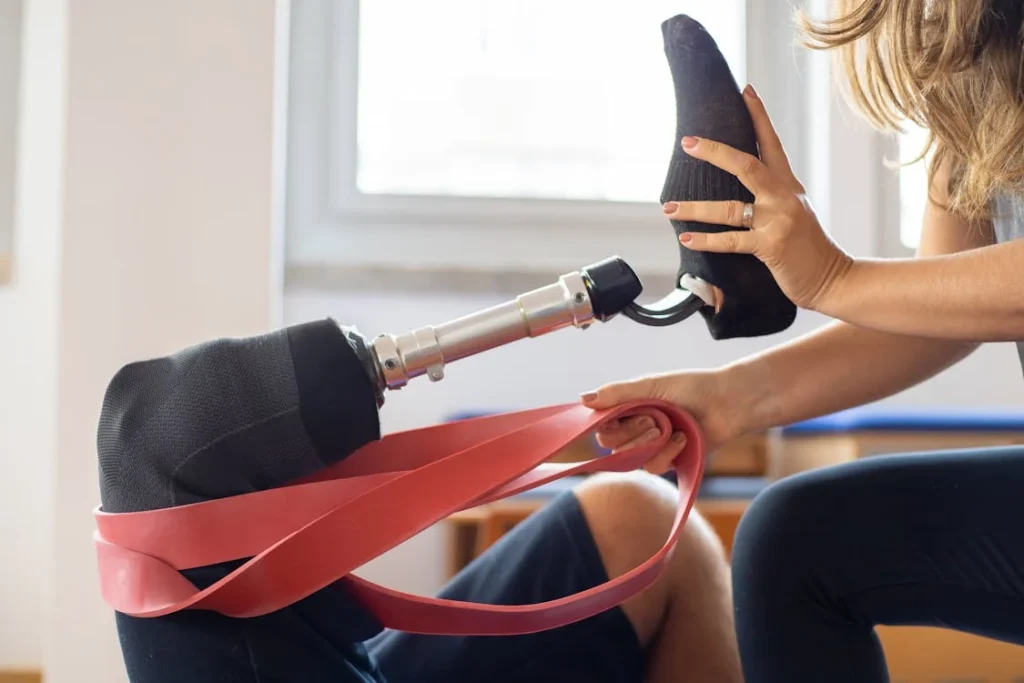
Comparing the Gait Training Approaches
While both partial foot and hemipelvectomy amputees must relearn how to walk, the methods and challenges differ significantly.
The presence of remaining foot structures in partial foot amputees allows for more natural walking patterns, whereas hemipelvectomy amputees must completely redefine their movement strategies.
Weight Distribution and Balance
For partial foot amputees, maintaining even weight distribution is crucial to prevent excessive pressure on the remaining foot.
Therapists teach them how to step properly, ensuring they don’t favor one side too much. Since the ankle is often still functional, patients learn how to maximize their remaining foot’s ability to balance and push off during walking.
In contrast, hemipelvectomy amputees face a much greater challenge with balance. With no leg or hip on one side, they must rely on their core and upper body to stabilize themselves.
The loss of a pelvis and hip joint shifts the center of gravity, requiring extensive training to prevent falls and ensure smooth movement.
Energy Expenditure and Walking Efficiency
Walking with a partial foot amputation requires less energy than a hemipelvectomy, but it still involves some inefficiencies. Without the toes or forefoot to push off, steps may become shorter and less powerful.
Over time, this can lead to muscle fatigue and an uneven gait. Training focuses on improving stride length, enhancing calf strength, and ensuring a balanced foot placement to make walking more efficient.
For hemipelvectomy amputees, the energy cost of walking is significantly higher. Since they lack a hip joint, every step requires lifting and swinging the entire prosthetic leg using the core and back muscles.
This effort can be exhausting, especially in the beginning. Training helps patients develop endurance while refining their movement to minimize unnecessary exertion.
Use of Prosthetics in Gait Training
Prosthetic solutions vary widely between these two types of amputations.
Partial foot amputees often use specialized inserts, toe fillers, or custom-built prosthetic shoes. These devices help restore lost function and improve stability.
Learning to walk with these prosthetics is a matter of making small adjustments rather than completely changing the way the body moves.
Hemipelvectomy amputees, however, require a much more complex prosthetic system. Their prosthetics must include a high-level socket that wraps around the pelvis, allowing the remaining body to control movement.
Training with this device involves learning how to use weight shifts and momentum to create a natural walking motion.
Adapting to Different Surfaces and Movements
Partial foot amputees usually find it easier to navigate different terrains since they retain some foot function.
However, uneven surfaces can still be a challenge, especially if their prosthetic doesn’t provide adequate grip or support. Therapists often train them on different surfaces like grass, sand, or slopes to ensure they can walk confidently anywhere.
For hemipelvectomy amputees, adapting to new surfaces is a much bigger challenge. Since their movement depends on controlled weight shifts and a swinging prosthetic, slopes, stairs, and uneven terrain require a great deal of practice.
Many use walking aids like crutches for added stability when dealing with challenging environments.
Psychological and Emotional Aspects of Gait Training
Regardless of the level of amputation, learning to walk again is as much a mental challenge as it is a physical one. The frustration of having to relearn something that once felt effortless can be overwhelming.
Support from therapists, family, and peers plays a crucial role in helping amputees stay motivated.
Partial foot amputees often struggle with the invisible nature of their disability. Because they still have most of their leg, others may underestimate their difficulties, making them feel misunderstood.
Encouragement and practical training help them regain confidence in their movement.
Hemipelvectomy amputees face an even greater psychological adjustment. The complete loss of a leg and pelvis alters body image and self-perception.
Rehabilitation programs often include counseling and peer support groups to help patients stay positive and focused on their progress.
The Role of Rehabilitation in Long-Term Mobility
Gait training doesn’t end once an amputee learns to walk again. Long-term rehabilitation is essential to ensure continued mobility, prevent complications, and improve overall quality of life.
Both partial foot and hemipelvectomy amputees require ongoing care to refine their gait, strengthen muscles, and adapt to any physical changes over time.
Ongoing Physical Therapy for Continued Improvement
For partial foot amputees, rehabilitation focuses on maintaining strength and flexibility in the remaining foot and lower leg. Over time, muscle imbalances can develop as the body compensates for the missing portion of the foot.
Regular physical therapy helps address these imbalances, ensuring that movement remains efficient and pain-free.
Hemipelvectomy amputees need even more long-term therapy. Because they rely so heavily on their core and upper body for walking, these muscles must remain strong to support daily mobility.
Physical therapists continue to work with patients on posture, weight distribution, and endurance to prevent overuse injuries.
Preventing Secondary Health Issues
Without proper rehabilitation, both types of amputees are at risk of developing secondary complications.
Partial foot amputees often experience pressure sores or ulcers on the remaining foot due to uneven weight distribution. If not addressed, this can lead to further amputations. Routine check-ups, proper footwear, and gait adjustments help prevent these issues.
Hemipelvectomy amputees are at higher risk for back pain, spinal misalignment, and joint strain due to the high energy demands of walking. Regular physical therapy and periodic prosthetic adjustments help minimize these long-term effects.
Adapting to Lifestyle and Activity Goals
Rehabilitation isn’t just about walking—it’s about returning to an active, fulfilling life. The needs of each amputee vary depending on their personal goals.
Some may want to run or engage in sports, while others may focus on daily activities like climbing stairs or carrying groceries.
Partial foot amputees can often return to high levels of physical activity with the right training and prosthetic support. They may require customized insoles or special athletic prosthetics to enhance performance.
Physical therapists help them refine their movement to ensure they can participate in their favorite activities safely.
Hemipelvectomy amputees face more challenges when it comes to sports and intense physical activity, but many still achieve remarkable mobility. Some use specialized prosthetics designed for running, swimming, or cycling.
The key to success is continued training and adaptation to ensure that movements remain efficient and injury-free.
The Importance of a Support System
The journey to regaining mobility is never just a solo effort. Family, friends, therapists, and prosthetists all play a role in helping amputees succeed.
A strong support system encourages patients to stay motivated, push through challenges, and celebrate progress.
Support groups and rehabilitation centers also provide valuable emotional and practical guidance. Connecting with others who have undergone similar experiences helps amputees feel understood and empowered.
Many rehabilitation programs include peer mentoring, where experienced amputees help newcomers navigate the challenges of gait training and prosthetic adaptation.
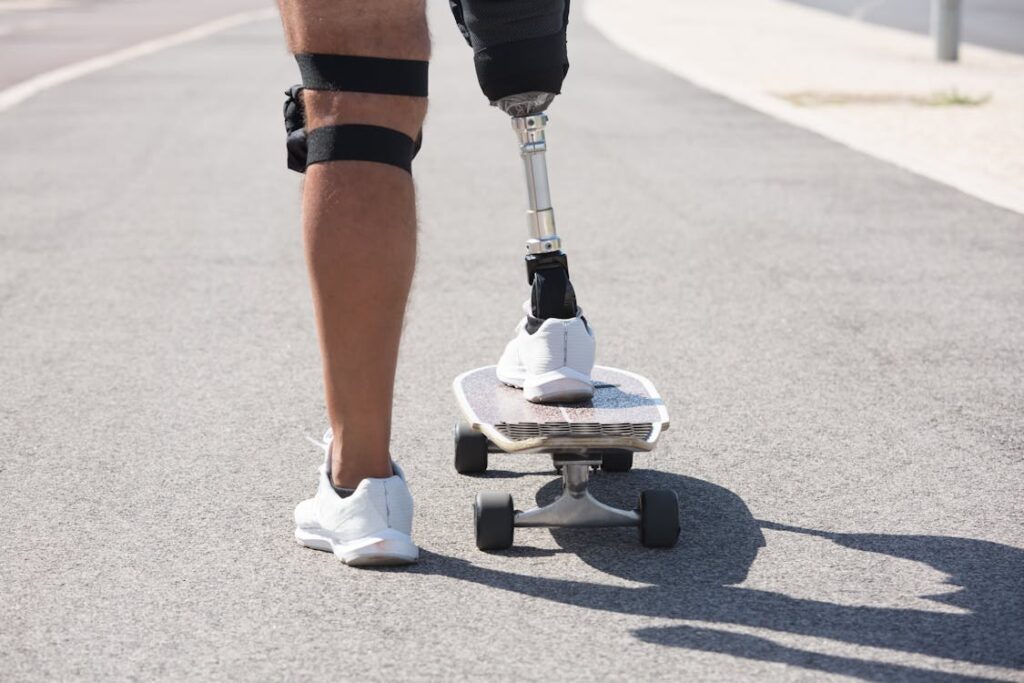
The Role of Technology in Gait Training
Advancements in prosthetic technology and rehabilitation tools have transformed the way amputees relearn to walk.
Both partial foot and hemipelvectomy amputees benefit from cutting-edge innovations that improve balance, efficiency, and comfort. From smart prosthetics to virtual reality-assisted training, technology is shaping the future of gait rehabilitation.
Smart Prosthetics for Improved Mobility
Traditional prosthetics provide essential support, but newer models now incorporate intelligent systems that enhance movement.
For partial foot amputees, dynamic foot prostheses mimic the natural bending and propulsion of a real foot, allowing for smoother strides. Some models even adjust automatically based on walking speed and terrain, reducing strain on the remaining foot.
For hemipelvectomy amputees, microprocessor-controlled prosthetic legs make a dramatic difference. These high-tech devices use sensors to analyze movement and adjust accordingly.
By predicting the user’s next step, they create a more natural walking pattern while reducing the physical effort required. This is especially useful when navigating stairs, slopes, or uneven ground.
Virtual Reality and Motion Tracking in Rehabilitation
Rehabilitation clinics are incorporating virtual reality (VR) and motion tracking systems to enhance gait training. These tools provide real-time feedback, allowing patients to see and correct their walking mechanics.
For partial foot amputees, VR environments simulate different terrains, helping them practice walking on surfaces like gravel, sand, or wet pavement in a controlled setting.
Hemipelvectomy amputees benefit from motion tracking that monitors body posture and weight distribution. These systems analyze how the core and upper body contribute to movement, helping patients refine their technique.
By practicing in a virtual environment, amputees gain confidence before transitioning to real-world mobility.
Gamified Rehabilitation for Motivation
One of the biggest challenges in gait training is maintaining motivation. Walking practice can be repetitive and exhausting, making it easy for patients to feel discouraged.
Gamified rehabilitation introduces interactive exercises that make therapy engaging.
For partial foot amputees, balance and coordination games encourage proper foot placement. Simple challenges like stepping on virtual targets or adjusting stride length in response to a visual cue help reinforce correct movement patterns.
Hemipelvectomy amputees often struggle with endurance, as walking requires significant energy. Gamified endurance training involves virtual walking challenges, where patients gradually increase their steps in a fun and measurable way.
By turning rehabilitation into an interactive experience, patients stay motivated and track their progress over time.
The Future of Gait Training Technology
The field of prosthetics and rehabilitation is rapidly evolving, with research focused on even more advanced solutions.
Robotic exoskeletons, AI-driven movement analysis, and brain-controlled prosthetics are being developed to make walking more natural and intuitive.
These innovations hold the potential to revolutionize gait training, allowing amputees to move with greater ease and confidence.
At Robobionics, we embrace these advancements to provide state-of-the-art prosthetic solutions that enhance mobility and independence.
By combining expert training with the latest technology, we help amputees regain control over their movement and live life without limits.
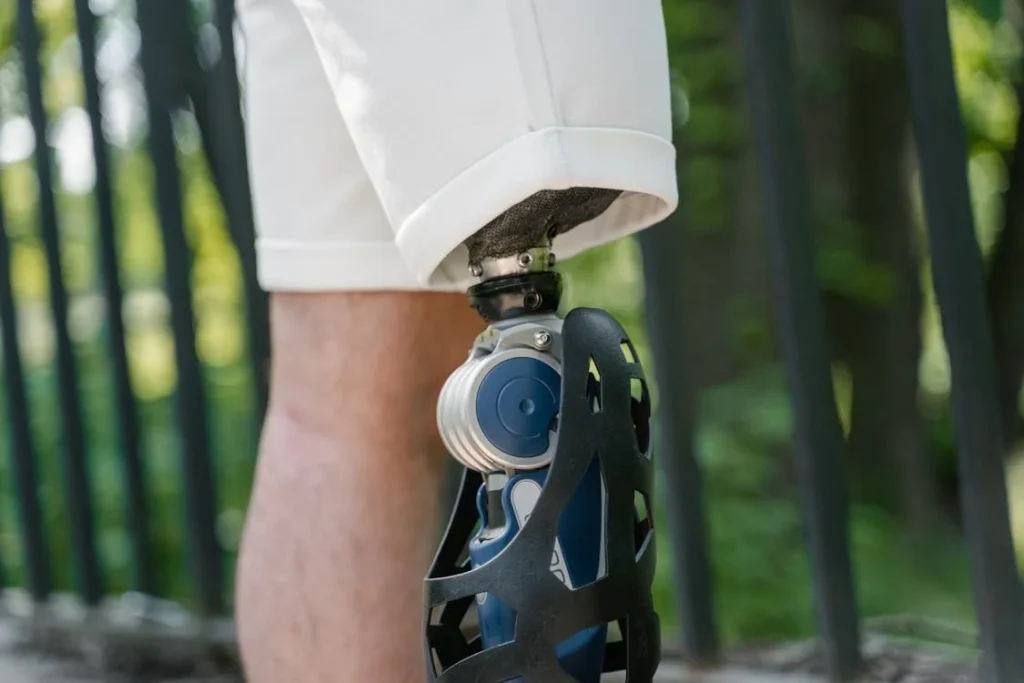
Psychological Adaptation in Gait Training
Learning to walk again is not just a physical challenge—it is an emotional and psychological journey as well.
Whether an individual has undergone a partial foot amputation or a hemipelvectomy, the process of adjusting to a new way of moving can bring frustration, self-doubt, and even fear.
Addressing the mental and emotional aspects of rehabilitation is just as important as physical training.
Overcoming Fear and Building Confidence
Many amputees struggle with fear when they begin gait training. Partial foot amputees may be afraid of losing balance or placing too much weight on their remaining foot.
Hemipelvectomy amputees, who must completely relearn movement, often experience anxiety about falling or not being able to regain independence.
Therapists and prosthetists work closely with patients to create a safe and supportive environment for learning.
Gradual exposure to different walking conditions, controlled fall recovery training, and confidence-building exercises help amputees regain trust in their ability to move.
Peer support also plays a crucial role. Meeting others who have successfully adapted to their prosthetics provides encouragement and reassurance.
Many rehabilitation programs offer group therapy or mentorship programs where experienced amputees share their journeys, helping new patients see that progress is possible.
Coping with Changes in Body Image and Identity
Amputation affects not only mobility but also self-perception. Partial foot amputees may struggle with the way their foot looks and feels, especially if they have to wear specialized footwear or prosthetics.
Hemipelvectomy amputees face a more drastic change, as their body shape is significantly altered.
Psychological support, including counseling and peer discussions, helps amputees process these changes. Many find strength in focusing on what they can do rather than what they have lost.
Rehabilitation programs emphasize ability, showcasing how amputees can regain independence, engage in physical activities, and even return to work or sports with the right training.
The Emotional Impact of Long-Term Adaptation
Even after successful gait training, emotional challenges can resurface. Frustration with slow progress, discomfort from prosthetic adjustments, or concerns about long-term mobility can affect mental well-being.
Regular check-ins with rehabilitation specialists ensure that amputees receive continuous support, both physically and emotionally.
Setting small, achievable goals and celebrating milestones—whether it’s walking without assistance or mastering a challenging terrain—helps maintain motivation.
At Robobionics, we recognize that true rehabilitation goes beyond prosthetic solutions. Our approach prioritizes the whole person, ensuring that both physical and emotional needs are met.
We believe that with the right support, every amputee can regain confidence, independence, and a positive outlook on life.
conclusion
Gait training is a highly individualized process, and no two amputees experience it the same way. While partial foot amputees focus on refining natural movement with minimal prosthetic intervention, hemipelvectomy amputees must completely re-learn how to walk using their upper body and core. Both journeys require patience, dedication, and expert guidance.
At Robobionics, we are committed to providing advanced prosthetic solutions and rehabilitation support to help amputees regain confidence and independence. Whether you’re adapting to a partial foot prosthetic or learning to walk with a high-level device, the right training and support can make all the difference.
Looking for expert prosthetic care and rehabilitation? Contact Robobionics today to explore our customized solutions and regain your mobility with confidence.



